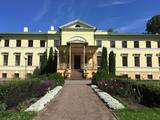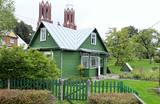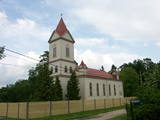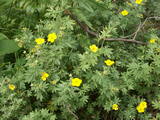| Nr | Nosaukums | Apraksts |
|---|---|---|
|
Saaremaa salas saimniecībā Epi ražo augļu un ogu kečupus, dažādus ievārījumus, audzē garšaugus un tējas. Produkti tiek gatavoti tikai no vietējām – Saaremaa un Muhu salas – izejvielām. Produktus var nopirkt tieši no saimniecības. |
||
|
Mazskarts Salacas upes ielejas posms ar lielu smilšakmens iežu atsegumu, netraucētu alu u.c. biotopu, sugu un ainavu daudzveidību. Salaca ir viena no nozīmīgākajām Baltijas jūras lašupēm un otra populārākā Vidzemes ūdenstūristu upe. Kā galvenie apmeklētāju piesaistes objekti jāmin ģeoloģiskie pieminekļi - Sarkanās klintis, Skaņais kalns, Neļķu klints, Velna ala un kultūras pieminekļi - Lībiešu pilskalns, Vecsalacas muiža, Lībiešu muzejs, Valtenberģu muiža, unikālie Salacas nēģu tači u.c. Parkā atrodas viens no Ziemeļvidzemes populārākajiem tūrisma objektiem – Skaņākalna parks, kurā izveidots blīvs taku tīkls. Salaca ir arī populārs makšķernieku galamērķis. Ietilpst Ziemeļvidzemes biosfēras rezervāta teritorijā. |
||
|
Vieta, kur stāsta stāstus par NAUKŠĒNU DISKO zemē dzimušajiem, ienākušajiem un palikušajiem. Te iespējams atklāt sevī igauni, sevi iekļaut muzeja pamatkrājumā un uzzināt savu augumu NAUKŠĒNU PIRKSTOS, bet svaru - NAUKŠĒNU KILOGRAMOS. Vieta domājošiem cilvēkiem, kuri nebaidās pasmieties par sevi un nav aizspriedumu pilni. Muzeja, muižas un parka apmeklējums notiek gida pavadībā. Ekskursijas ilgums - apmēram 1 stunda 30 minūtes. Muižās kungu namā (Lauvu namā) ir apskatāma lielā balles zāle, upes puses terase un muižas vēstures ekspozīcija. Pārējā kungu nama daļa un citas ēkas apmeklētājiem nav pieejamas, jo muižas kompleksā izvietota Sociālās korekcijas iestāde «Naukšēni». Parkā apskatāma centrālā daļa ap strūklaku, mušeli (parka estrādi) un Siera tornis. Piedāvā eļļu degustāciju, kā arī iegādāties. |
||
|
Muzejs dibināts ap 1990. gadu. Augļu dārzs, kura vēsture saistīta ar rakstnieci B. Buivīdaiti, iekopts 1935. gadā. |
||
|
Atrodas Sēravotu ielā 10. Historisma stila celtne būvēta no koka 1899. gadā un ir jaunākā no trijām Ķemeru baznīcām. Baznīcu no iekšpuses var apskatīt dienās, kad notiek dievkalpojumi. Pārējā laikā – no ārpuses. |
||
|
Atrodas Lielajā ielā 9. Dievnams celts 1742. - 1758. g. (J. K. Dorna projekts) pilsētas vācu draudzes vajadzībām, bet 55 m augstā torņa celtniecību pabeidza 1866. gadā. Baznīcas fasāde un interjers ir veidots vēlīnā baroka stilā ar klasicisma (interjerā – arī grezni rokoko stila elementi) iezīmēm. Dievnams pazīstams ar 1773. - 1780. g. būvētajām (H. A. Konciuss) ērģelēm. Pēc 1885. g. pārbūves instrumentam ir > 7000 stabuļu, 131 reģistrs un 4 manuāļi. Tas ir nominētas kā pasaulē lielākās mehāniskās ērģeles, kurās vērts ieklausīties koncertu laikā! Apmeklētāji var apskatīt baznīcu, ērģeles un uzkāpt tornī. |
||
|
Purvs, kurā izplūst sērūdens avoti, izveidojies Abavas ielejas kreisā krasta nogāzes lejasdaļā. Tā ir vienīgā vieta, kur Latvijā savvaļā aug aizsargājama augu suga – krūmu čuža. Tās audzes aizņem aptuveni 1/5 daļu no lieguma teritorijas. Teritorijā ietilpst arī apkārtnes meži, dažādu tipu pļavas, Čužu sērūdeņu avoti, kā arī sēravots – „Velna acs”. Teritorijas apskates nolūkos ir izveidota un labiekārtota dabas izziņas taka. Dabas liegums atrodas Abavas senlejas dabas parka teritorijā (sk. sadaļu "Dabas parki"). |
||
|
Atrodas Limbažu Lielezera ziemeļrietumu krastā, vietā, kur sākas Lielezera dabas taka. No torņa pārredzams Lielezers un tā tuvāko krastu ainava. Vērts iziet arī vairākus kilometrus garo un interesanto taku. Atrodas Ziemeļvalstu biosfēras rezervātā. |
||
|
Saimniecībā tiek piedāvāti dažādi biškopības produkti: medus, bišu maize, propoliss, vaska sveces. Iespēja sarunāt izzinošu ekskursiju - ceļojums bišu pasaulē ar gulēšanu uz bitēm. Tiek piedāvāta arī loku šaušana un zāļu tējas. |
||
|
This tour will take you on a walk through the Curonian Spit from Nida to Smiltynė. The Curonian Spit National Park is located on a long, sand-dune spit that separates the Curonian Lagoon from the Baltic Sea coast. A sand beach of ~50 km is running on the western side of the dune spit, while the shore of the Curonian Lagoon is shallow and characteristic of ridged bays overgrown with reeds. The Baltic Coastal Hiking Route starts in the centre of Nida near the port. In Nida, it runs along the Curonian Lagoon promenade, offering beautiful views of the spacious waters. From Nida to Bulvikio Cape, the Baltic Coastal Hiking Route winds along small forest paths leading up and down pine-covered dunes; in the village of Preila, the trail runs along the promenade of the lagoon. Between Pervalka and Juodkrantė, the Baltic Coastal Hiking Route leads along a beautiful, sandy beach. You can take the Raganų kalnas (Hill of Witches) trail in Juodkrantė. The route alternates between the Baltic Sea coast, the dunes and the Curonian Lagoon until it finally reaches the ferry, which will take you to Klaipėda. |
||
|
Nacionālais botāniskais dārzs Salaspilī ierindojas kā lielākais botāniskais dārzs Latvijā un Baltijā ar 136 hektāru lielu teritoriju. Nacionālā botāniskā dārza augu kolekciju veido apmēram 14 tūkstoši dažādu šķirņu. Vairāk nekā 5000 augu atrodami dendrārijā, tāpat te atrodamas dažādas citas ekspozīcijas, piemēram, augļu dārzs, rozārijs, krāšņumaugi. Botāniskajā dārzā var rast iedvesmu sava dārza sortimenta papildināšanai ar jaunām augu dažādībām, kā arī gūt iespēju botānikas zināšanas apgūt dabā. Iespēja papildināt personīgo fotoarhīvu ar ekskluzīvu fonu fotogrāfijām un tuvplāniem. Botāniskā dārza teritorijā izveidota rotaļu vieta bērniem, ērti celiņi riteņbraucējiem, taciņas nūjotājiem, piknika iespējas. |
||
|
Zaļmuiža ievērojama ar savu leģendāro pagātni. 19. gs. sākumā te par rakstvedi strādāja viens no
ievērojamākajiem Latgales Atmodas celmlaužiem, dzejnieks, zemnieku tiesību aizstāvis Pīters Miglinīks
(1850 – 1883). 1784. gadā tā piederēja Fridriham fon Korfam, tad 1795. gadā Zaļmuižu par 65 000 dālderu nopirka
Krievijas cara armijas virsnieks Nikolajs Paulins fon Rozenšilds, kura mazdēls bija Krievijas Senāta civilpadomnieks.
Muižai bija plaša saimniecība, 800 ha zemes, vairākas lopu kūtis, augļu un vīna pagrabi, spirta
brūzis. No senās Zaļmuižas godības saglabājusies pārbūvēta muižas kungu dzīvojamā ēka, kā arī zemē
pusiegrimusi klētiņa. Līdz 20. gs. 60. gadiem kungu mājā atradās kolhoza „Liesma” centrs, vēlāk klubs. Tagad
te savu smēdi iekārtojis mākslinieks, metālkalējs Jānis Ļubka. Tūristi šeit var vērot metālkalšanas procesu, kā
arī paši izmēģināt pacilāt smago āmuru.
|
||
|
Aukštaitija ir lielākais un viens no senākajiem Lietuvas novadiem, kas kopš 15. gs. saukts par „īsto Lietuvu”. Šajā ceļojumā baudīsiet lauku labumus, ko Aukštaitijas novads piedāvā mūsdienās. |
||
|
Kīdevas muiža rakstos ir minēta 1614. g., taču pašreiz redzamā divstāvu kungu māja, ir celta 19. gs. beigās. Ēkas sienas ir klātas ar koka šķindeļiem, kas viens otru pārklāj kā zivs zvīņas. Šāds kungu mājas sienu pārklājums Igaunijas mērogā ir unikāls. Laikā no 1919. – 1951. g. tajā atradās skola. Blakus muižai atrodas neliels parks. Diemžēl turpat pusgadsimtu ilgās pamestības rezultātā ēkas atrodas ļoti kritiskā stāvoklī. Tas ir arī pietiekams apmeklējuma iemesls. |
||
|
Viens no skaistākajiem Latvijas ābeļdārziem (~ 10 ha un 30 ābolu šķirnes), kas iekārtots iespaidīga paugura nogāzēs, no kura augšdaļas skaidrā laikā var redzēt Rīgas jūras līča ūdeņus. Īpaši skaisti šeit ir ziedošu ābeļu laikā. Piedāvā ābolus un degustācijas. |
||
|
Oranžērija Bekuciems ir ģimeniska svinību vieta 40 min braucienu attālumā no Rīgas, Tomes pagasta Bekuciemā. Šeit ir iespējams svinēt savus dzīves skaistākos notikumus - kāzas, krustabas, dzimšanas dienas, bērniņa raudzības, fotosesijas, atpūsties pie dabas, gatavot ēst un pašiem saklāt skaistu svētku galdu, organizēt korporatīvos pasākumus, iepazīstināt ārzemju tūristu grupas ar latviešu tautas tradīcijām un dzīvesveidu. Oranžērija ir apsildāma un darbojas visu gadu. Tās platība ir 4x6m un tajā ērti var justies nelielas kompānijas līdz 15 personām. Tā ir pilnībā aprīkota ar visu nepieciešamo atpūtai - mēbelēm, traukiem, galda piederumiem, kafijas aparātu un tējkannu, bezvadu bluetooth skaļruni, ledusskapi, plediem, svečturiem, svecēm, vāzēm, bērnu barošanas krēsliņi utt. Ap oranžēriju ir plaša teritorija, kurā var atpūsties liels skaits cilvēku. Te irpļavas, dīķis, āras atpūtas vieta, pirts un pirts nojume, grils, kūpinātava, ugunskura vieta un ugunskura zupas vieta, pļavas altāris, bērnu spēļu laukums, pļavas futbols, āras labierīcības. Blakus ir sēņošanas un pastaigu vietas Bekuciema slavenajos mežos. No saimnieces vasaras sezonā var sarunāt zaļumus, garšaugus un zāļu tēju. |
||
|
Augstākā vieta Daugavpils dienviddaļā 18. Novembra ielas apkaimē, kur salīdzinoši nelielā teritorijā, ~ 0,3 km rādiusā atrodas četru konfesiju dievnami – Daugavpils Pirmais vecticībnieku lūgšanas nams (1908. – 1928.), Daugavpils Sv. Borisa un Gļeba pareizticīgo katedrāle (1905.), Daugavpils Dievmātes katoļu baznīca (1905.) un Daugavpils Mārtiņa Lutera katedrāle (1893.). |
||
|
Līgatnes ziemeļdaļā – Gaujasmalā ir jāuzmeklē vienīgā mūsdienās funkcionējošā Gaujas pārceltuve un vienīgā Baltijā, kas darbojas ar straumes spēku. Pārceltuve ir vietēja mēroga transporta līdzeklis. |
||
|
Veisieji reģionālais parks (Veisiejų regioninis parkas) veidots (1992.g.) Sudavas augstienes (Sūduvos aukštuma) ainavu, bioloģiskās daudzveidības un kultūras pieminekļu aizsardzībai. Viena no parka bagātībām ir ezeri, kuru iegarenās formas liecina par ledāja darbības rezultātu. Pēdējā apledojuma laikā šeit atradusies ledāja mala. Ezerus (kopā – 37) ieskauj lielāki meža masīvi uz kontinentālām (iekšzemes) kāpām, kas piemēroti atpūtai dabā, dabas vērošanai, ogošanai un sēņošanai. Parkā ir iekārtotas peldvietas, kur patīkami gremdēties vasaras tveicē, izveidotas dabas takas, bet mazās upītes, kas savieno ezerus, ir piemērotas braucieniem ar kanoe laivām. Veisieji reģionālā parka teritorijā ir liela augu un dzīvnieku daudzveidība. Šeit tiek aizsargātas arī tādas retas sugas kā Eiropas kokuvarde Hyla arborea (parka simbols), purva bruņurupucis Emys orbicularis, dažādas orhideju sugas u.c. |
||
|
Aktīvā atpūta svaigā gaisā, dabā. Dabas taka, atpūtas vieta, grilla vietas, lapenes. Lāzera cīņas jeb Laser tag ir spēle svaigā gaisā, ģimenes vai draugu kompānijā. Iegūsiet pozitīvas emocijas un kārtīgu adrenalīna devu, spēlējot augsti tehnoloģisko spēli reālā laikā un vietā. Lāzera cīņas ir visiem labi zināmā peintbola analogs, bet atšķirīgs ar to, ka Laser taga spēlē spēlētājus-pretiniekus “neitralizē” ar drošiem un nekaitīgiem lāzera šāvieniem no lāzera-ieroča, bet pati spēlētāja “neitralizācija” notiek, kad speciāli devēji (sensori), kuri ir nostiprināti uz spēlētāja apsaites, reģistrē pretinieka lāzera-ieroča staru, kas nozīmē, ka nav ne krāsu bumbiņu, ne sāpīgi sitieni, ne zilumi. Šī koncepcija padara Laser tagu pieejamu ne tikai vīriešiem, bet arī sievietēm un bērniem. |
||






















